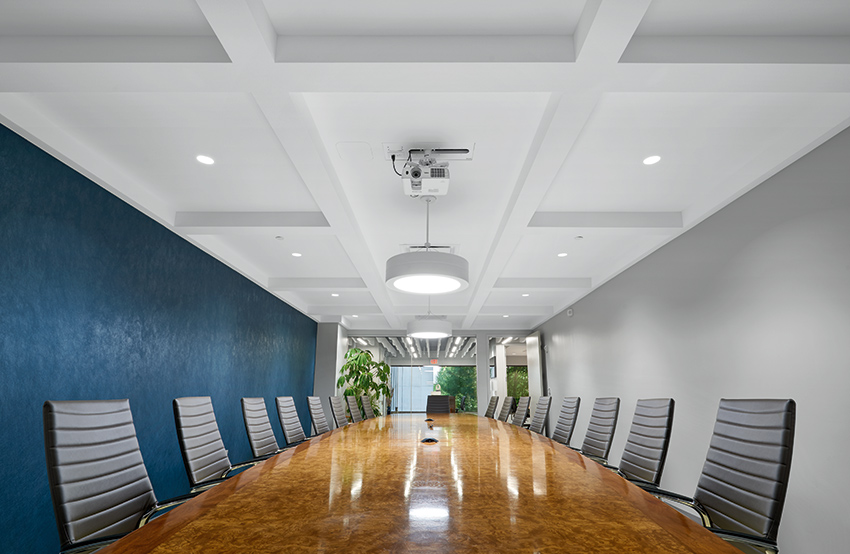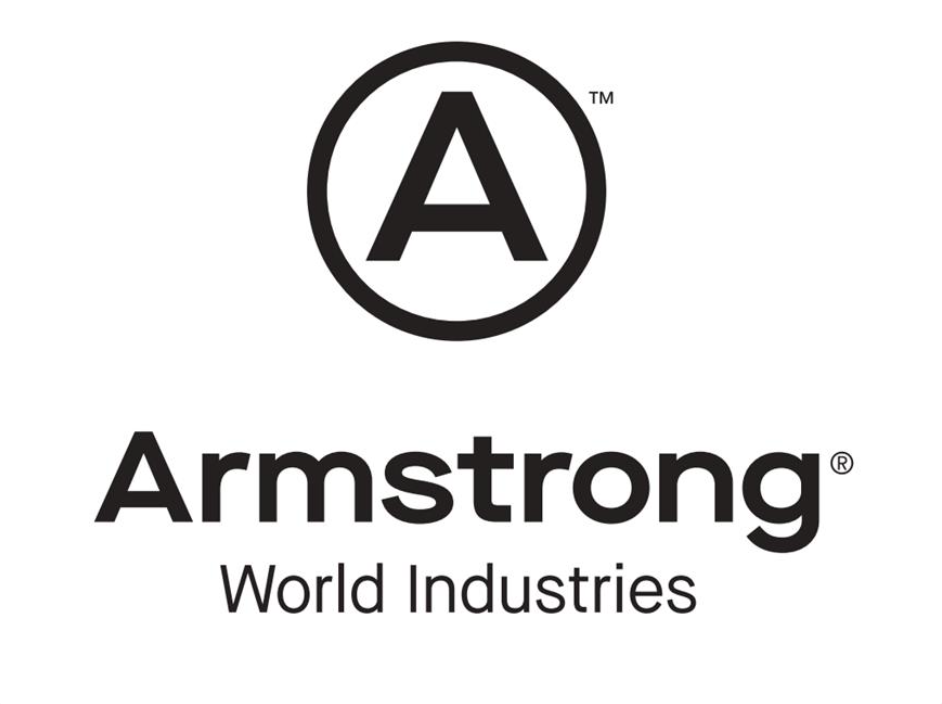How to Specify Seamless Acoustical Ceilings
 1 AIA LU/HSW; 1 IDCEC CEU/HSW; 1 GBCI CE Hour; 0.1 ICC CEU; 0.1 IACET CEU*; 1 AIBD P-CE; AAA 1 Structured Learning Hour; This course can be self-reported to the AANB, as per their CE Guidelines; AAPEI 1 Structured Learning Hour; This course can be self-reported to the AIBC, as per their CE Guidelines.; MAA 1 Structured Learning Hour; This course can be self-reported to the NLAA.; This course can be self-reported to the NSAA; NWTAA 1 Structured Learning Hour; OAA 1 Learning Hour; SAA 1 Hour of Core Learning
1 AIA LU/HSW; 1 IDCEC CEU/HSW; 1 GBCI CE Hour; 0.1 ICC CEU; 0.1 IACET CEU*; 1 AIBD P-CE; AAA 1 Structured Learning Hour; This course can be self-reported to the AANB, as per their CE Guidelines; AAPEI 1 Structured Learning Hour; This course can be self-reported to the AIBC, as per their CE Guidelines.; MAA 1 Structured Learning Hour; This course can be self-reported to the NLAA.; This course can be self-reported to the NSAA; NWTAA 1 Structured Learning Hour; OAA 1 Learning Hour; SAA 1 Hour of Core Learning
Learning Objectives:
- Discuss the challenge for architects to strike a balance between aesthetics, cost, and acoustic performance for the wellbeing of the occupant.
- Recognize the evolution and current options for smooth surface ceilings that improve acoustic performance.
- Compare performance, cost, and installation methods of seamless acoustical ceilings to ensure a healthy environment for occupants.
- List common misperceptions associated with seamless acoustical ceiling products.
This course is part of the Acoustics Academy
Aesthetic Compatibility
White is the most common ceiling color for acoustical drywall alternative, however light color tones are available. There is not a lot of flexibility when it comes to darker colors. Design trends that use multiple materials for ceilings in single and adjoining spaces continue to be on the rise, and the acoustical drywall alternative is able to integrate with—and complement—materials such as wood, metal, and felt to provide the mixed-material aesthetic.
Seamless Integrations For Acoustical Ceiling Systems
Acoustical ceiling systems that have the smooth look of drywall can be integrated seamlessly with lighting and other features the same way as a drywall ceiling. They accommodate light fixtures, HVAC grille, floating trim, shade pockets, HVAC return air plenum, access doors, and transitions to standard acoustical ceiling systems. The system’s finish can be used to coat most GRG or metal access panels/doors in order to maintain a consistent finished-ceiling visual.
These pre-engineered, integrated solutions not only make specification easy but also allow fast and easy installation by removing the guesswork. The ceiling and components are specifically designed to work together as a system, yielding a variety of benefits.
 Photo courtesy of Armstrong Ceiling and Wall Solutions
Photo courtesy of Armstrong Ceiling and Wall SolutionsCeiling systems provide a first impression to anyone entering the room and can affect the way people experience their interactions with others inside the space.
Integration with Lighting Systems
The seamless acoustical drywall alternative integrates well with a variety of lighting systems, from energy efficient LED lighting to luminaires. For instance, it can integrate with lighting designs for high ceilings, zero plenum interference, and on-center continuous or noncontinuous linear lighting layouts.
These types of ceilings can be installed with most compatible light fixtures or diffusers, but it is still important to select those that will specifically integrate with the system. It’s crucial to select fixtures than can accommodate 7/8-inch-thick ceiling panels. Also of note: Excessive ceiling integrations and/or small enclosed spaces where the ceiling is more joint compound than open area will result in degradation of sound absorption.
Integration of In-Ceiling UV-C Air-Cleaning Systems
UV-C air-cleaning systems have become more popular and have seen more development over the past year and a half since the first U.S. shutdowns due to the pandemic in early 2020. As people return to work, systems that can proactively fight pathogens have become not just a stopgap between pandemic times and “normal” times, but a solution for the long term. Building owners must come to accept the idea that prevention is key and understand that technologies that can clean the air are now essential to help reduce the transmission of certain viruses, bacteria, and allergens.
Tests have proved that high-quality, UV-C air-cleaning technology reduces the transmission of certain viruses, bacteria, and allergens. In some cases, simulation studies have shown UV-C air-cleaning systems reduce bacteria by more than 20 percent and reduce inhaled particle concentration by 22 percent in comparison to rooms with no air filtration.
Acoustical drywall alternative ceiling systems integrate well with certain UV-C air-cleaning systems. Ceiling units can be concealed and installed out of the way. In tests, in-ceiling placement of air-cleaning technology outperforms air-cleaning units placed on the floor. In one simulation study, the in-ceiling unit reduced particle concentration by 14 percent more than traditional floor units.
Seismic and Other Movement Features
Seismic design is an essential part of the structural analysis when designing a building. Seismic design features can help preserve a building during and after it experiences an earthquake. It’s an aspect of design that has evolved over time and is now a basic component of integrated systems, including ceiling systems.
Drywall grid systems that support the seamless acoustical ceiling systems have been tested and are approved for use in seismic design categories D, E, and F. Seismic D corresponds to buildings and structures in areas expected to experience severe and destructive ground shaking, but not close to a fault. Seismic E refers to buildings in areas near major active faults. Seismic F corresponds to buildings of occupancy groups in hospitals, police stations, and emergency control centers near major active faults.
Seamless acoustical ceiling systems also integrate with control joints to help relieve stress induced by small movement from absorption or expulsion of moisture. Control joints are required and follow the same guidelines used for drywall in ASTM C480 Section 20. The ceiling systems integrate well with expansion joint systems, too, which are integral to seismic design and handle small and big impacts from movement from moisture to earthquake activity.
Access Doors
Plan for access doors just as with drywall or move the item that needs service access to another area that has acoustical ceiling tile so the item is accessible. Specifying clouds can also provide open access areas to the plenum between the clouds.
Soffits
One significant misperception about seamless acoustical ceilings is that they are more limiting than drywall in terms of options. In fact, these systems are capable of very complex soffit designs using a prefabricated soffit framing system that quickly clicks into shape and installs faster and easier.
Conclusion
Since the early Neolithic settlements, architecture has offered a range of evolving solutions to an endless number of structural and aesthetic design problems. In this article we have learned that the desire to balance form and function sometimes takes a breakthrough technology that had never before been imagined. Ceiling systems inside a building provide a first impression to the occupant but can also come with hidden costs and benefits that are unseen, like acoustics. Until recently, architects that wanted a smooth seamless ceiling could not get function (acoustics) at a reasonable cost. An acoustical drywall alternative is part of a sea change in the world of ceiling systems. In a time when IEQ—which embraces both aesthetics and acoustics as priorities for health and well-being—has become a basic tenet for design consideration, this kind of system is a logical step in the evolution of ceiling systems.
Armstrong World Industries is a leader in the design and manufacture of innovative commercial ceiling and wall systems. At home, at work, in healthcare facilities, classrooms, stores, and restaurants, Armstrong Ceiling & Wall Solutions offer interior options that help create healthy, sustainable spaces that protect people and cultivate well-being and comfort so they can be at their best.
Armstrong is committed to developing new and sustainable ceiling solutions, with design and performance possibilities that empower its customers to create beautiful, high-performance residential and commercial buildings. Armstrong continues to grow and prosper for the benefit of all its stakeholders. armstrongceilings.com/commercial
Declare® is a registered trademark of International Living Future Institute®; Living Building Challenge®, WELL™ and WELL Building Standard™ are trademarks of International WELL Building Institute; LEED® is a registered trademark of U.S. Green Building Council; REGENXBIO® is a registered trademark of REGENXBIO, Inc.; UL® is a registered trademark of UL LLC; all other trademarks used herein are the property of AWI Licensing LLC and/or its affiliates.
© 2022 AWI Licensing LLC
Erika Fredrickson is an independent writer and editor focusing on technology, the environment, and history. She is a frequent contributor for continuing education courses and publications through Confluence Communications. www.confluencec.com
 |
Armstrong World Industries is a leader in the design and manufacture of innovative commercial ceiling and wall systems. At home, at work, in health-care facilities, classrooms, stores, and restaurants, Armstrong Ceiling & Wall Solutions offer interior options that help
create healthy, sustainable spaces that protect people and cultivate well-being and comfort so they can be at their best.
Armstrong is committed to developing new and sustainable ceiling solutions, with design and performance possibilities that empower its customers to create beautiful, high-performance residential and commercial buildings. Armstrong continues to grow and prosper for the benefit of all its stakeholders. armstrongceilings.com/commercial |









